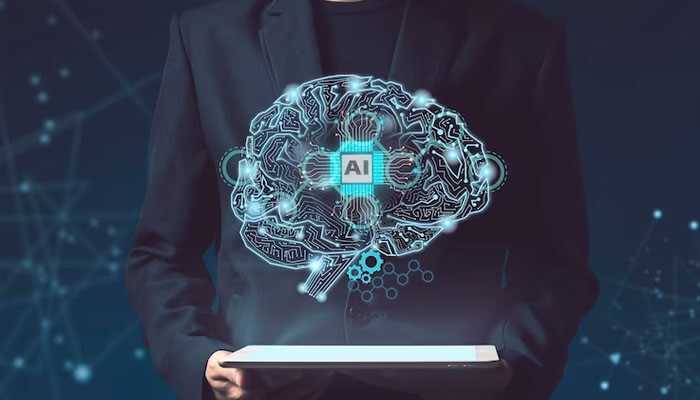AI-driven innovation in today’s world offers businesses new possibilities for growth. For CTOs aiming to position their companies at the cutting edge of their industries, understanding and leveraging AI is crucial. This blog post provides a comprehensive blueprint for CTOs to harness AI for innovation, driving their organizations into a future where technology is not just a tool, but a strategic partner in success.
Embracing AI: The New Imperative for CTOs
Understanding the AI Landscape
Before diving into AI-driven innovation, it’s essential to grasp what AI encompasses. AI is not a singular technology but a constellation of technologies, including machine learning, deep learning, neural networks, natural language processing, and more. Each of these technologies has unique applications and potential for driving innovation in different business areas.
The Strategic Role of AI in Business
Generative AI is transforming the traditional roles of technology in business. For a CTO, integrating AI means going beyond operational efficiency. It’s about leveraging AI for strategic decision-making, predicting market trends, personalizing customer experiences, and fostering new business models. AI is not just a technological upgrade; it’s a paradigm shift in how businesses operate and compete.
Crafting an AI-Driven Strategy
Aligning AI with Business Goals
The first step in formulating AI-driven strategies is aligning AI initiatives with the organization’s overall goals. Whether the aim is to enhance customer engagement, streamline operations, or innovate product offerings, each AI initiative should directly contribute to these overarching objectives.
Identifying Opportunities for AI Integration
CTOs need to identify areas within their business where AI can have the most significant impact. This involves analyzing current processes, products, and services to pinpoint where AI can bring about transformative changes. It could be automating routine tasks, deriving insights from data analytics, or enhancing customer interactions with AI-powered solutions.
Fostering an AI-Ready Culture
For AI initiatives to thrive, an organizational culture receptive to AI is essential. This means not only equipping the team with the necessary tools and training but also fostering an environment that encourages innovation, experimentation, and a data-driven approach to problem-solving.
Building the Foundation for AI Implementation
Developing or Acquiring AI Capabilities
One of the key decisions for CTOs is whether to develop AI capabilities in-house or to acquire them through partnerships and collaborations. This decision should be based on factors like existing in-house expertise, resource availability, and the specific needs of the business.
Data: The Fuel for AI
Data is at the core of AI’s effectiveness, making access to quality data essential. The impact of AI data integration plays a crucial role in enhancing the accuracy and efficiency of AI models. This requires investment in robust data collection, management, and analysis systems and a solid commitment to data privacy and ethical standards.
Navigating the Challenges
Implementing AI is not without its challenges. These include managing the integration of AI with legacy systems, addressing the skills gap within the team, and ensuring AI solutions are ethical, transparent, and free from bias.
Practical Aspects of AI Implementation
Pilot Projects and Scaling
A prudent approach to AI integration is to start with pilot projects. These smaller, controlled initiatives allow CTOs to gauge the effectiveness of AI solutions in real-world scenarios. Based on these results, strategies can be refined and scaled up to larger operations. This step-by-step approach mitigates risk and provides valuable insights for broader implementation.
Leveraging AI for Customer-Centric Solutions
One of the most significant impacts of AI is in enhancing customer experience. AI can analyze customer data to provide personalized experiences, predict customer needs, and automate customer service. This not only improves customer satisfaction but also builds stronger customer relationships, driving loyalty and growth.
AI in Product Development and Innovation
AI can revolutionize product development by bringing in predictive analytics, market trend analysis, and customer feedback insights. This enables the creation of innovative products that meet market demands more effectively. AI can also streamline product development, reducing time-to-market and enhancing product quality.
Overcoming Challenges in AI Adoption
Bridging the AI Talent Gap
One of the key challenges in AI adoption is the talent gap. Developing an AI-skilled workforce involves training existing staff, hiring new talent with AI expertise, and fostering a culture of continuous learning and innovation. Collaborations with academic institutions and specialized training programs can also be effective strategies to bridge this gap.
Ensuring Ethical AI Use
Ethical considerations are paramount in AI implementation. This includes addressing biases in AI algorithms, ensuring transparency in AI decision-making processes, and safeguarding user privacy. Establishing ethical guidelines and regularly auditing AI systems for compliance are critical steps to ensure responsible AI use.
Integrating AI with Existing Systems
Integrating AI with legacy systems can be challenging. It requires a strategic approach to ensure compatibility and minimize disruption. This may involve updating or replacing outdated systems, which can be a significant investment. However, the long-term benefits of a fully integrated, AI-enhanced infrastructure are substantial.
AI-Driven Innovation: Key Takeaways for CTOs
Continuous Learning and Adaptation
The field of AI is continuously evolving. Staying informed about the latest developments and being adaptable to change is crucial for maintaining a competitive edge. This involves not only keeping up with technological advancements but also being receptive to changing market dynamics and customer expectations.
Measuring AI’s Impact
To assess the effectiveness of AI-driven innovation, it’s essential to establish clear metrics for success. This could include improved operational efficiency, increased customer satisfaction, revenue growth, or enhanced product quality. Regularly measuring these metrics helps in fine-tuning AI strategies and demonstrating the ROI of AI investments.
Conclusion
For forward-thinking CTOs, AI-driven innovation is a journey of continuous exploration, learning, and adaptation. It’s about leveraging AI not just as a tool but as a strategic ally in reshaping business models, enhancing customer experiences, and driving growth. By embracing AI, CIOs can lead their organizations to new heights of innovation and success, setting a benchmark in the dynamic world of technology. In this AI-enhanced era, the key to success lies in the intelligent application of AI, underpinned by a commitment to ethical practices and continuous evolution.



